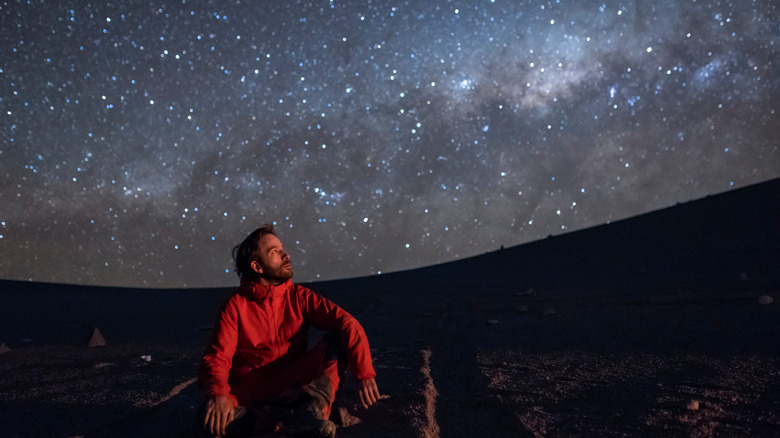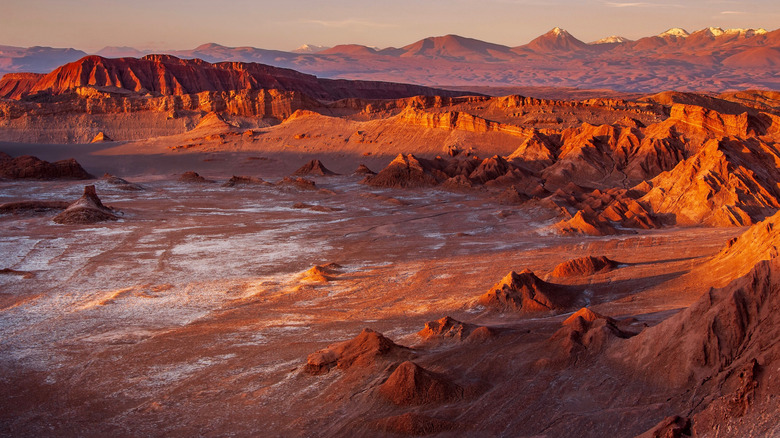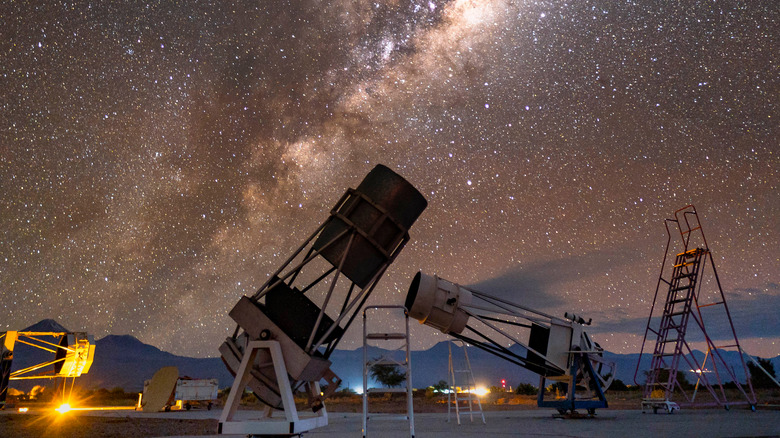The Clear Skies Of Chile's Atacama Desert Make It The Ideal Stargazing Destination
Nothing is more soothing to the soul or thought-provoking than standing outside in the darkness of night, away from city lights, traffic, and all things intrusive to the brain, staring up at the expanse of evening sky, watching the stars flicker and dance throughout the cosmos. Peering into the vastness of space and time wondering what or who is beyond those illuminating orbs can be exhilarating. And, the quiet, peacefulness one experiences while gazing upon the stars, has a profound calming effect on one's physical and mental health, according to Nature Makes Us Better.
Whether you're a young child or a mature adult, a novice or an astronomer, when it comes to stargazing, there are no boundaries or prejudices: It is a shared and unified global experience unlike any other. Finding the perfect spot for admiring the twinkling lights; locating the many constellations; and viewing the Milky Way is key to an awe-inspiring and fascinating observation of the night sky. And, fellow stargazers will be pleased to know that Chile's Atacama Desert has the clear, unpolluted skies that are perfect for mapping out the stars, making it the ideal stargazing destination to view everything in the celestial plane.
Stars, Mars, and the 33
Situated between the Pacific Ocean and the Andes Mountain range in Chile, the Atacama Desert is a narrow plateau of arid, rocky, and sandy terrain with a seasonal climate polar opposite of the Northern Hemisphere. Boasting an estimated one dozen volcanoes and dozens of geysers, expansive sand dune formations, salty flats, and salt lagoons, its landscape is most certainly extraterrestrial in nature. And, as reported by CNN Travel, it has a striking resemblance to the planet, Mars.
Its elevation of more than 16,000 feet, as confirmed by Live Science, and 11 months of crystal-clear evening skies, provides both a pollution-free and rain-free environment that is absolutely perfect for discovering the heavenly bodies within the night sky. It was 2010 when the Atacama Desert became known for more than its vast, natural observatory of viewing the celestial sphere. A freak mining disaster occurred, trapping 33 miners underground for 69, excruciating days before being rescued, as recounted by CNN; the entire world watching the heroic feats of the rescue teams as they brought each man to the Atacama Desert's surface, alive.
Reaching for the stars one way or another
Imagine making your way through the nearly 700-mile Atacama Desert, and suddenly coming upon a gigantic hand emerging out of the rust-colored sand, its fingers pointing toward the heavens, as though its reaching for the stars. Are you hallucinating from the parched, desert heat? Could it be a mirage? The answer to both those questions, is unequivocally, no. The Mano del Desierto (Hand of the Desert), is no illusion, according to CNN Travel, but rather a 36-foot, left-hand sculpture situated within the Atacama Desert in Chile: Its right-hand partner, Los Dedos de Punta del Este, resides on the beaches of Uruguay.
For astronomers and novice stargazers, the Atacama Desert is quite literally celestial heaven on earth. According to Fodor's, there are two world-renowned observatories, and a gargantuan-sized telescope park located upon its otherworldly terrain, open to the public for observing the starry skies, and into the vast solar system. The Atacama Desert is also the perfect place to observe the Milky Way without the need of telescopes or binoculars: The sky over this desert is so clear, observers can view the galaxy to our solar system with their naked eyes, and ponder on thoughts of life beyond earth.


